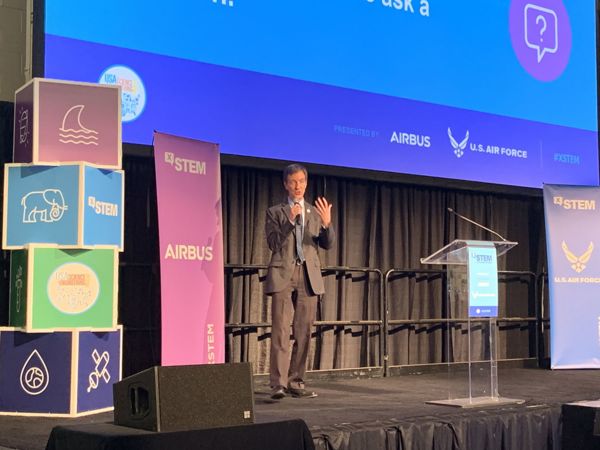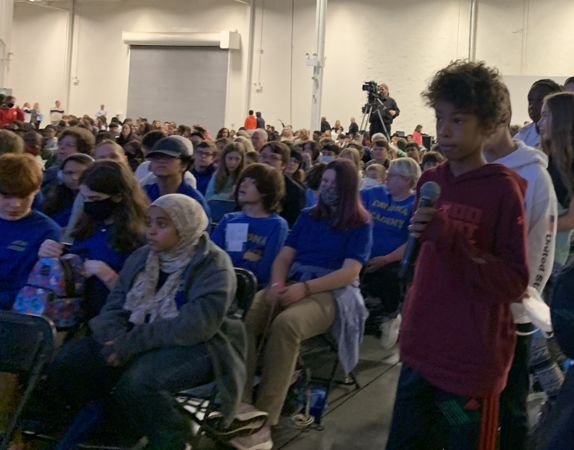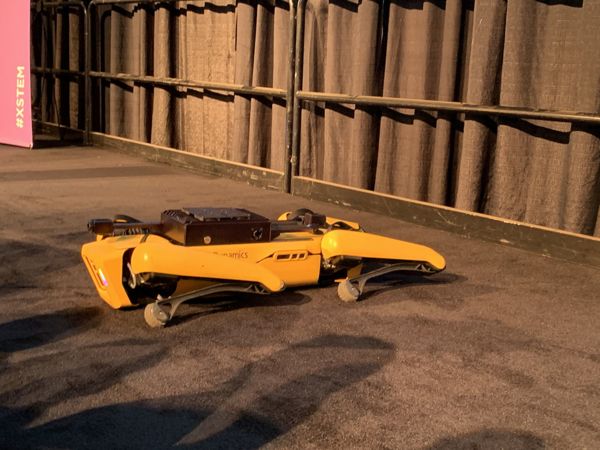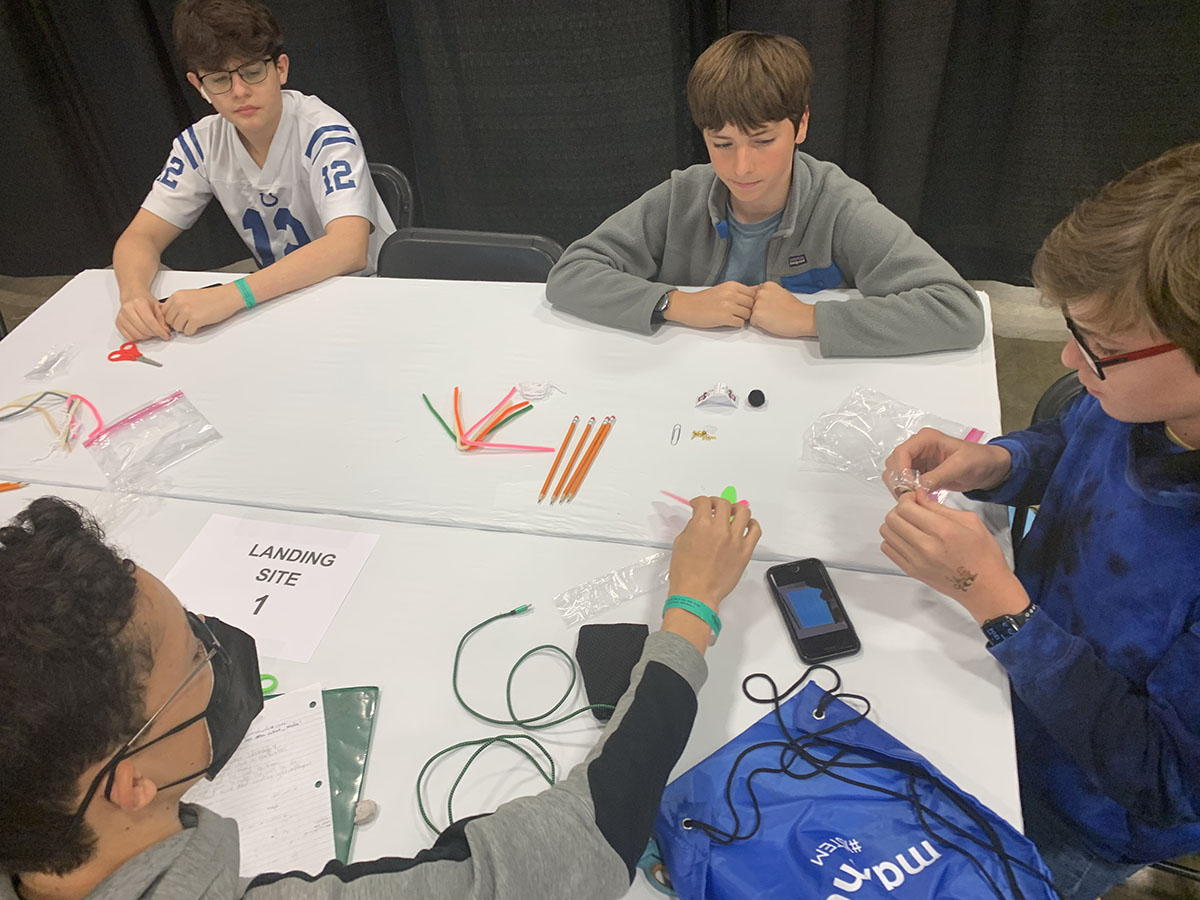XSTEM Event in Northern Virginia on Wednesday, Oct 26th
X-STEM NOVA (Northern Virginia) is an annual event, organized by the USA Science & Engineering Festival, aimed to stimulate and sustain the interest of students in science, technology, engineering, and math (STEM). The 2022 X-STEM was the first such event hosted after the covid outbreak.
Twenty GISW students from 5th through 11th grade got the opportunity to attend the “X-STEM NOVA” conference on Wednesday, Oct 26th at the Dulles Expo Center in Chantilly.
Students attended presentations from leading STEM role models, participated in Q&A sessions, experienced hands-on workshops, and had fun while learning about exciting career opportunities in STEM. With the participation of organizations such as NASA, National Oceanic and Atmospheric Administration (NOAA), Airbus, U.S. Air Force, Amazon Web Services, Industrial Base Analysis and Sustainment (IBAS), and the U.S. Space Force, there was plenty excitement for all.
The students’ highlight for this year’s X-STEM NOVA was the presentation of Dr. Thomas Statler, a NASA planetary scientist, who described his work on the Double Asteroid Redirection Test (DART) mission — humanity’s first attempt to change the motion of a natural celestial body in space and the first full-scale test of an asteroid deflection technology. As anticipated, the students found his presentation most intriguing, as demonstrated by the abundance of their questions following the presentation. A thoughtful question from Zoran L. (6b, GISW – pictured) drew an engaging and brilliant response from Dr. Statler.
Another well received talk on Environmental Engineering was presented by Dr. Tracy Fanara, a highly regarded engineer and research scientist. For the past 6 years, Dr. Fanara has been managing the Environmental Health research program at Mote Marine Laboratory where she designed and developed models, tools and programs to protect wildlife and water quality. Here are some impressions of her work voiced by GISW students who attended the event:
“Of the many presentations of this field trip, I found the one presented by Dr. Tracy Fanara to be the most fascinating. She is an accomplished environmental scientist and NOAA researcher with a Ph.D. in Hydrology. Throughout her presentation she explained how water is both adaptable and persistent, gentle yet powerful, how it has changed landmarks, and how it is essential for our lives, the ecosystem – our planet.
Dr. Fanara has done important research involving algae blooms. She used species like shrimp, oysters, and snails to purify water from toxins. One point I found especially interesting was that the earth works the way our bodies do: water transports nutrients across the world just like blood does across the body. Her presentation was inspiring, and I learned much from it.” Isabella H. (7a)
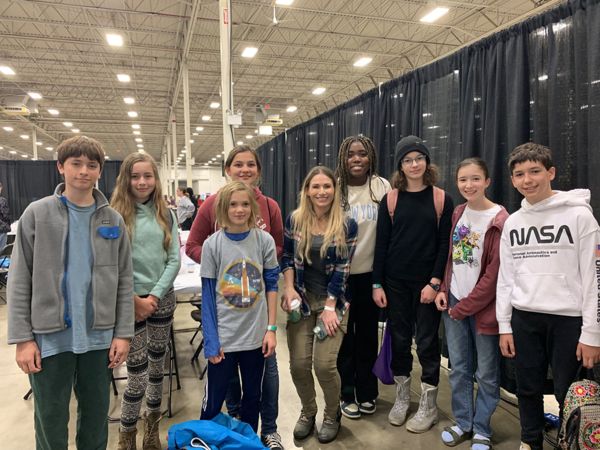
“Dr. Fanara explained how the toxic waste we dump into our oceans is not good for the animals and the environment. (…) NOAA uses mussels, clams and other animals to filter the toxic water.” by Sophie W. (7a)
After the presentations ended and before the workshops began, students had the opportunity to engage with STEM speakers and workshop presenters. Pictured above is Dr. Tracy Fanara, center, surrounded by GISW students.
Students were also able to meet Airbus’s robotic firefighting “dog”, Snowball, during a live presentation aimed at demonstrating how robots are used, who builds them, and how we can join this exciting and innovative field.

During lunch break a group of students met Prof. Kelly Knight, a forensic scientist with a Bachelor of Science degree in chemistry from The George Washington University, and a Master of Forensic Science degree from Virginia Commonwealth University, while Annabel G. took the opportunity for a selfie with the professor. Prof. Knight talked to students about the “real CSI” and explained how science is used to fight crime. Prof. Knight is both an expert in forensic serology and forensic DNA analysis and has been an expert witness in several criminal trials. In addition to her forensic casework, she has many years of experience in research which has included laser microdissection and low copy number (LCN) DNA methods.
After lunch, students participated in the workshop “Spark-E's Last Minute Flight”.
Lucas C. (11a) describes the event:
“We were introduced to a scenario and received an assignment: There is an harmful algae in the waters around the Palmyra's islands.
The objective is to deliver the solution to the island by aircraft as silently and safely as possible, so as not to disrupt the animals on the island. Our job was to design a plane that can meet these requirements.
However, there is a plot twist: the algae has spread more widely than researchers had previously anticipated. Therefore, the new objective is to mass produce the planes we previously designed.
This exercise taught us the basics of manufacturing: problem solving, careful thinking, testing and modifying.”
Overall, the event surpassed students’ and teachers’ expectations in highlighting and celebrating the wonders of STEM. Students were excited to learn and interact with leading role models in multiple STEM fields and are eager to attend the next STEM event.
Nicole Bankert („Schüex“ Program Director) und Steffi Colopy (MINT-Coordinator)

